|
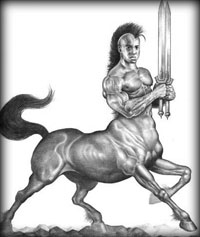
Centaur:
Centaurs are half-horse and half-human. They
have the horse’s body and the human’s torso and head. The hair on
their heads matches that on the rest of their bodies. Males have manes that run
from their heads down their spines and connect with the horse body. The females
are smaller than the males, who can grow up to 7½ feet tall. They also have long
life spans of up to 300 years. They also have a great interest in the stars and
have astronomical calendars. Originally they are generally open to humans and
interaction sought it. Early on, humans and centaurs were great allies
and the highly educated of the two races would often exchange information with each other.
Now centaurs are skeptical of humans, but generally fell that it is their obligation to protect or even fight alongside
humans. A centaur’s word of honor is an unbreakable vow that he would rather
die than break. Some say that a centaur actually cannot break a promise and that
he must keep it.
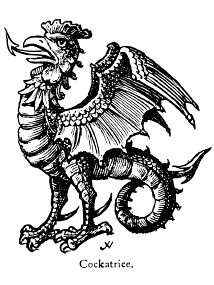
Cockatrice:
Very similar to a wyvern,
cockatrice are the size of a giant chicken. When they stand up, they are only
3 or 4 feet tall, but head to tale are up to 9 feet long. They have a magical
power to turn people to stone wither by breathing on them, or touching them with the point of their tale. They can fly, although not very gracefully, and are scaled. They
have two teeth that carry a poison in them. To living flesh, it will kill the
skin and anything it contacts. When it has turned something into stone though,
the poison will return the prey into its original state so that it may be eaten. Even
after death, the tale of a cockatrice will still turn one into stone. Cockatrice,
unlike dragons, are evil creatures and there is no record of any that side with the good.
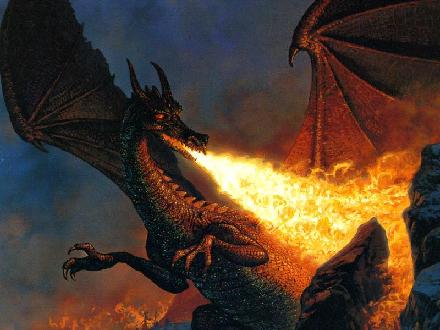
Dragons:
The first thing to understand about dragons is there devotion. They are
devoted to the side they choose early on in life. If they choose the good, they
will stay there; if they choose darkness, they will stay there. There is only
one time in history that a dragon has ever changed sides, and there is question as to if this was not his plan all along. They are also very devoted to their friends, allies, and riders. A dragon will choose a one rider, who it becomes extremely close to.
They must be pure in heart for a good dragon to choose them, or very evil for a bad dragon to choose them. It is this devotion that makes dragons one of the noblest creatures.
In their entire lifetime, a dragon may lay up to three eggs. Due to their
generally solitary attitudes, it is rare for them to ever mate and to lay three is practically unheard of. They live extremely long live though, up to 400 years. The
average dragon life is 300 years though. This fact makes it hard to be certain
exactly how often they mate and most things about this process are still a mystery.
When a dragon hatches it is about the length of a man’s forearm. In
a month, they have doubled in size, and in a year they are the size of a horse. Once
a dragon reaches adulthood, its head is about 15 feet above the ground. Including
head, neck, body, and tale, it is around 50 feet long. It is believed that dragons
never stop growing throughout their long lives, even though it does slow to almost nothing.
Dragons have razor sharp claws that they use to pick up and rip into their prey.
They usually feed on deer or animals like them; anything much smaller is nothing but a snack. The main physical difference between wyverns, cockatrice, and dragons, is that dragons have four limbs
and wings. Although dragons are not as affective fliers as wyverns because of
their added weight, they more than make up for this fact it the great strength of their wings.
A single blow from a dragon wing could easily kill a man. Except on their
wings, they are completely covered by scales. Dragons rarely lose their scales,
when they do they are very valuable artifacts because of their magical properties. Dragon’s
magic is very powerful. They can give people magical abilities to some extent,
although this is usually reserved for their riders. They can also breath and
bend elements. The most common is the ability to breath fire. There is also the ability to breath water and wind, while other dragons can bend earth and lighting. In extreme cold, a dragon’s ability to breath water can be changed into ice. Likewise, in when near a volcano, the ability to bend earth is extended to bending
lava.
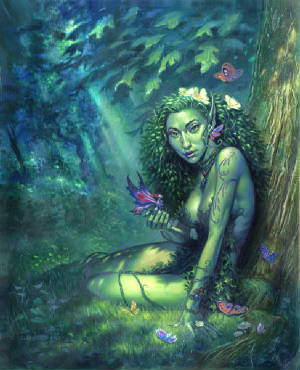
Dryad:
Dryads are female tree spirits. There are no male dryads and so their
reproduction is different from many other creatures. They are tree nymphs that
live in the forest. They are born with a certain tree and if the tree dies, then
so does the dryad. Dryads watch over the forests in which they live and guard
it from invaders. They make sure that other creatures do not cut down trees in
the forest. In later years, dryad numbers have begun to wane and they cannot
protect the forest as they use to. This problem is only added to by their love
of song and dance. They spend much of the time that they should be protecting
in festivals. One cannot say if dryads are good or evil. They are almost always on the side of good on the whole, but they can sometimes attack or turn against
those who are not evil.
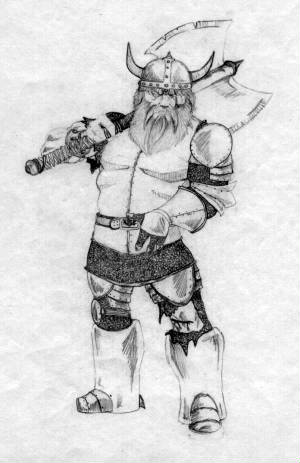
Dwarves:
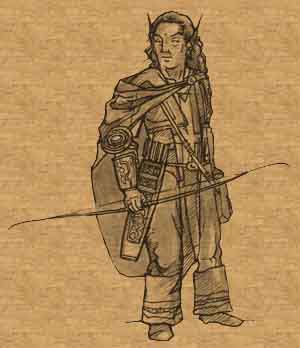
Elves:
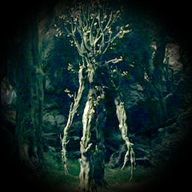
Ents:
Ents are like great, moving trees. They are not actually trees, which are stationary and mindless, and will take great
offence at being called so. They have the ability to walk, talk, and carry out
functions as humans would. They have no need to make homes or tools, they live
out in the forest and use what they have as tools. The forests that they live
in, they are also responsible for protecting. They generally stay in the same
area and form councils consisting of several ents. In their councils they usually
discuss such things are rain fall, forest growth, and occasionally what is happening in the outside world. There does not seem to be a life span on ents. They seem to
grow just as a normal tree would, collecting light and water. Even if their was
a life span on ents, it is far to long for anyone to know of because no one has lived that long.
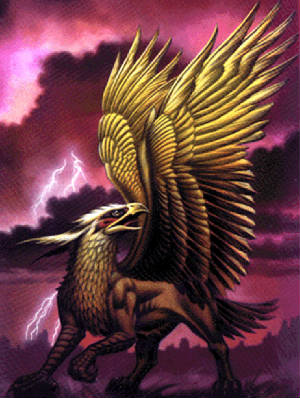
Griffin:
Griffins consist of the body of a lion with the head and wings
of an eagle and prominent, pointy ears. They have talons on their forelegs, which
they can use to snatch up prey. Their hind legs have paws, as would a normal
lion, which allows them to jump extremely well. They are usually solitary creatures
that do no spend much time with anyone. The exception to this is their mate. Once a griffin chooses a mate, it is for life.
Even if a griffin’s mate dies, it will never take a new mate. They
seem to have a general quarrel with horses, and a general dislike and distrust of dragons.
Few humans ever speak to one, although they respect elves and feel a bond with harpies.
When a female lays her eggs, she lays them in a cave with a small opening. The
male generally hunts for food while the female watches over her three ostrich sized eggs.
The female leaves three or four times a day to stretch her wings and will occasionally do a little hunting. They guard their young with great ferocity and raise them carefully.
Griffins regard their children as the most important things that they will ever have.
It is because of this that the bond between griffin parents and their children is so strong.
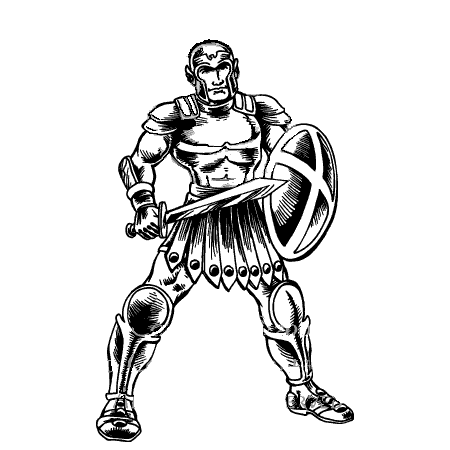
Humans:
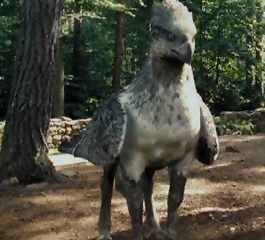
Hypogrif:
There are many different spellings
of the name for this creature. Hypogrif, Hypsography, Hypogrif, Hipogriph, Hippogriff,
or Haplography are the main spellings. No matter how it is spelled, the creature
is the same. A hypogrif (this is the spelling I will use) is a cross between
a griffin and a horse. Yet griffins and horses are mortal enemies, which makes
a hypogrif an extremely rare creature. There have been attempts to bread griffins
and horses, but almost all of these have failed. It shares many traits with the
Pegasus, the main anatomical difference being the head. Hypogrifs are also faster
than the Pegasus. They are described as being as fast as lightening. This fact makes hypogrifs the best aerial mount by far. They
are also much easier to train then griffins and other flying creatures. Hypogrifs
are almost always good, but they can could be trained for evil.
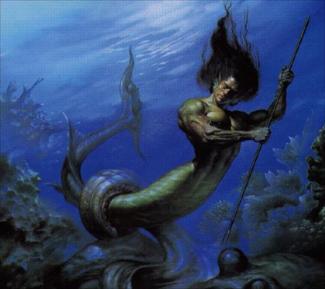
Merpeople:
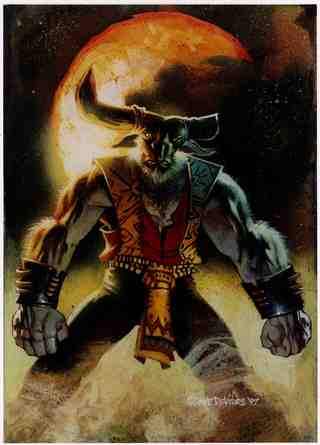
Minotaur:
Minotaurs are giant bulls that stand on
their hind legs. They wield either axes or hammers. They enjoy fighting and killing anything. They are considered
to be primitive by humans. The only time they attack humans is when they feel
that their land is being invaded. This shows they are territorial and will kill
intruders. Their love for killing has been their greatest downfall. Because they are so territorial, they often kill off potential mates.
And even though they are far stronger than any human, they will take on groups of humans and will die for their rash
decisions. They are evil creatures that enjoy destruction. It is estimated they live anywhere between 60 and 100 years, but it is hard to tell since they spend all
of their time away from humans and civilization.
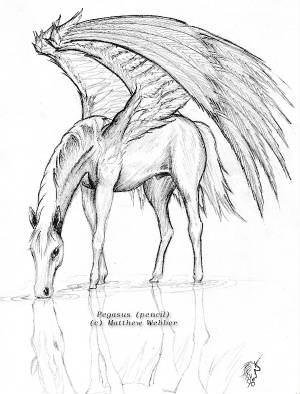
Pegasus:
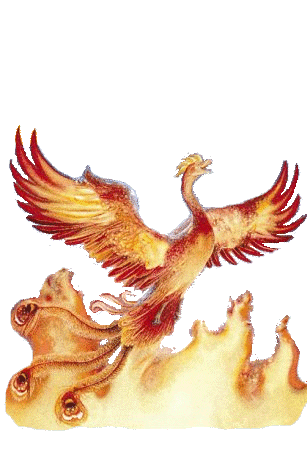
Pheonix:
Pheonix are noble birds with red and gold
feathers. They live for thousands and thousands of years because of their unique
ability. When a pheonix comes to the end of its life (about 20 years) it builds
itself a nest and then bursts in flame. From the ashes the pheonix is reborn. It can also do this if it is wounded or some how becomes ill. In this way the can practically live forever. Pheonix tears
have a magical healing property that will heal any wound. The pheonix is a symbol
of light and goodness. It watches over the events in the world and often takes
action to push things towards good using magic. No one is sure if new pheonix
are ever born, but it is assumed that they are at some point, but this is pure speculation.
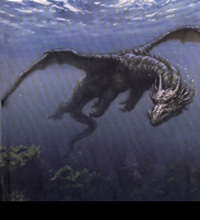
Sea Dragon:
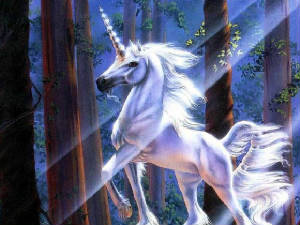
Unicorn:
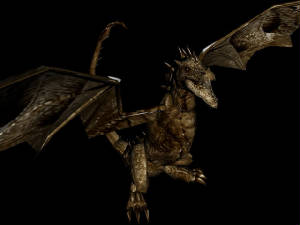
Wyvern:
A wyvern is a reptilian animal that is similar to a dragon. It is smaller than a dragon and is not able to breathe any element, as most dragons
can. It has two hind legs, which it puts most of its weight on. Its front limbs are an arm like wing that it uses to climb or to fly.
Wyverns are more agile than both cockatrice and dragons. They are generally
skinner and quicker. They generally do not carry riders. The only exceptions are when there is a great need
to or if they are trained to. At one point a breed of wyverns was developed specifically
to carry human riders, but other than that, it is usually too much strain on the wyvern to carry a full sized human. Elves, on the other hand, can be carried due to their lightness. Wyverns are not necessarily good or evil. Unlike most races
that almost always take one side, the wyverns are split. Generally, they are
good, but there are a large percentage that side with evil. About two out of
three side with the good, but there is always that third.
|



